 On your unique journey to the Chiloé archipelago, you will visit the places that Darwin wrote about. From the minute you set foot on the ferry that takes you from Pargua, near Puerto Montt on the Chilean mainland, across the two kilometer Chacao Channel to the island you will step back in history to begin retracing Darwin’s footsteps. As you do, you’ll learn about the island’s history, geology, nature, culture and politics. For visitors it will be akin to stepping inside a living social studies book with all the advances of current knowledge about each facet you perceive. At the same time you will support the protection and conservation of this unique world where 50% of the living species are unique to the island.
On your unique journey to the Chiloé archipelago, you will visit the places that Darwin wrote about. From the minute you set foot on the ferry that takes you from Pargua, near Puerto Montt on the Chilean mainland, across the two kilometer Chacao Channel to the island you will step back in history to begin retracing Darwin’s footsteps. As you do, you’ll learn about the island’s history, geology, nature, culture and politics. For visitors it will be akin to stepping inside a living social studies book with all the advances of current knowledge about each facet you perceive. At the same time you will support the protection and conservation of this unique world where 50% of the living species are unique to the island.
Just like Darwin you will keep a journal to capture your unforgettable experiences and compare your notes to those of the famed naturalist. Your journal will be a lasting keepsake to revisit Darwin’s Chiloé time and time again and share your adventure with family and friends.
If you haven’t been in a Chilean forest, you don’t know this planet. – Pablo Neruda
Day 1: Chilean Lake Region
Darwin arrived in the Lake Region in June of 1834 after a difficult passage through the Straits of Magellan and into the Pacific Ocean. Modern travel affords you a much more pleasant journey. Plan a flight to arrive by midday to Puerto Montt in the Lake Region. Upon arrival, with the help of your expert guide, you will be whisked off to Puerto Varas, a lovely town with a rich German heritage located on the western shore of Lake LLanquihue, Chile’s second largest lake. In the evening at your 4-star Hotel with spectacular views of the Osorno and Calbuco volcanoes, join fellow travelers for a champagne cocktail reception and dinner for an overview of the tour and your contribution to local culture. Learn about the geology of Chile, why it is a country with so many volcanoes (# 2 behind Indonesia) and how Isla Chiloé was formed. Your journey is now underway!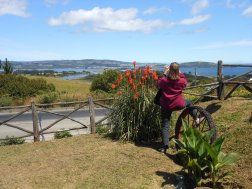 Day 2: Chiloé Arrival
Day 2: Chiloé Arrival
After breakfast, board the ferry at Pargua for a 30-minute ride across the Chacao Channel to arrive at Chacao on the mystical isle of Chiloé. During the breezy crossing, see your first seabirds – terns, gulls, petrels and more – along with sea lions and the other marine life that Darwin described in his journal. (Note that Darwin actually arrived in Chacao on horseback from Ancud – a key fortress at the time – where the Beagle first dropped anchor. He wrote that he was amazed at the almost impenetrable forests of evergreen trees and thickets in the area.) First stop is the rural village of Caulín located on Chiloé’s northern seashore to visit the migratory bird sanctuary. In Caulín, where protecting the environment is THE way of life, learn about and observe the protected birds — among them the Kelp, Brown Hooded Gulls and the amusing Black Simmers — living happily alongside their human observers and protectors. Next stop is the historic fort city of Ancud. The Spanish built Ancud in 1770 to protect the entrance to the channel and mainland from the English. The city also served a crucial role as a safe harbor for ships circumnavigating the Atlantic to the Pacific around Cape Horn. In Ancud, explore churches, museums, and Fort Antonio. When the Spanish surrendered the territory of Ancud, Chile finally achieved its independence from Spain. From Ancud, travel to see the Humboldt and Magellanic Penguin colonies and learn about the unique geological formation of the island and surrounding the bay. Visit local natural communities that value organic farming the old fashioned way and recognized as a Globally Important Heritage Agricultural System. Before retiring, enjoy an evening of more Darwin tales and local lore at a world recognized eco-lodge. Here you will learn about serious sustainable tourism and practice it for 2 days.
 Day 3: West Coast Surprises
Day 3: West Coast Surprises
The west coast is sparsely populated due to lack of good roads and distance from commerce. That makes the visit all the more authentic as you experience the natural countryside.
Early to rise and enjoy kayaking and/or hiking in a river basin that sank 6 feet during the 1960 major earthquake and created a new habitat.Interact with the local community to enjoy an authentically prepared lunch. Participate in natural wool spinning, dying and weaving and then partake of the “chilote once”, a light dinner. This isolated rural area makes for a great journal entry, since it provides prime geotourism examples of both natural and human communities. See firsthand how the ecotourism draw has helped the local area. Your trip will contribute to the well being of the locals.
Day 4: Beaches and National Park
Learn about Chile’s national park, Parque National Chiloé, located on the west coast and dedicated in 1982. View the high quality exhibits in the Interpretive Center and walk in the Valdivian jungle, the temperate rainforest found throughout Southern Chile. Park Rangers provide an excellent overview and description of the park and its ecosystem. Find out about Chiloé endemic species of plants and animals, many of them residents of the national park. In addition to the Pudu, the island boasts Darwin’s frog and the Chiloé fox.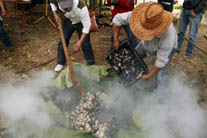
For the next 2 nights (2 guest rooms per cabin) enjoy cozy and well appointed cabins with natural night music after you join in the millennium old tradition, “curanto al hoyo, ” with a special Lago Huillinco beach front seafood banquet which dates from Patagonia’s first dwellers.
Day 5: Horses & Valdivian Rain Forest
Wake up to an exhilarating horseback ride along an unforgettable beach and/or go hiking for another view of Chiloé’s National Park.Why is the Valdivian forest unique in the world and why did Pablo Neruda love it so? You’ll have time to explore the cabins’ surrounding native forest property and see for yourself. You can bird watch or just take in the environment as you consider Darwin’s crossing of Lake Huillinco paddled by the indigenous locals because land travel was impossible. Chiloé’s ancient mythology and local music are enlivened with our Chilote friends as they share the evening and their lives with you. You will learn how each area has different customs, yet are all woven into one friendly culture.
Day 6: Modern Beagle Sea Journey
Morning takes you on a sea journey that Darwin followed during his exploration. Learn about maritime traditions, customs and mythology as you sail past archipelago islands. After disembarking, learn about local Huilliche communities and how they work together for mutual economic benefit as you have lunch in their fogon. Continue on the Pan American Highway to the city and bay of Quellón. It is the “Hito Zero” or termination point of the Highway and lies across from the islands of Cailín, (Caylen which Darwin dubbed “the end of Christianity”), Laytec and San Pedro, all of which Darwin wrote about in his journal. Accommodations for the night are provided by Quellón’s most modern, comfortable hotel. (WiFi is included in each room if you are so inclined.) The hotel is situated on a hill overlooking the bay and the fishing harbor with views of the Gulf of Corcorvado all the way up Chiloé’s coast to the Chacao Channel. At low tide, see fishing boats of all sizes listing in the mud. After a special salmon dinner, enjoy a discussion to learn about the conservation of forests as well as the fishing industry and how it has transformed southern Chile and the island of Chiloé.[/.Day 7: Castro, Chiloé Capital
After breakfast, it’s time to journey through the countryside to visit a private, locally owned preserve. Spend the morning in another Valdivian Rain Forest and learn of the challenges encountered preserving this threatened natural resource by the local indigenous families. Final stop is Castro, the island’s capital, for lunch before heading to the new Castro airport. In his journal, Darwin wrote about Castro as “the ancient capital of Chiloé but now a most forlorn and deserted place…the streets and plaza were coated with fine green turf, on which sheep were browsing.”Darwin would be surprised to see Castro today. It’s a growing and bustling city that blends the old with the controversial new architecture. You will experience the changes of Castro as you wing your way home or on to your next Chilean destination knowing that you contributed to Chiloé’s conservation through sustainable geotourism.


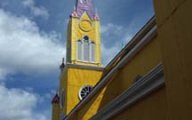
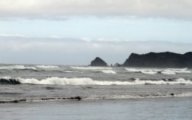







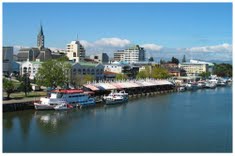 Valdivia (Spanish pronunciation: [valˈd̪iʋja]) is a city and commune in southern Chile administered by the Municipality of Valdivia. The city is named after its founder Pedro de Valdivia and is located at the confluence of the Calle-Calle, Valdivia and Cau-Cau...
Valdivia (Spanish pronunciation: [valˈd̪iʋja]) is a city and commune in southern Chile administered by the Municipality of Valdivia. The city is named after its founder Pedro de Valdivia and is located at the confluence of the Calle-Calle, Valdivia and Cau-Cau...
 Quillota is a city and commune located in the Aconcagua River valley of central Chile's Valparaíso Region. It is the capital and largest city of the Quillota Province where many inhabitants live in the surrounding farm areas of San Isidro, La Palma, Pocochay, and...
Quillota is a city and commune located in the Aconcagua River valley of central Chile's Valparaíso Region. It is the capital and largest city of the Quillota Province where many inhabitants live in the surrounding farm areas of San Isidro, La Palma, Pocochay, and...
 The Nazca Plate, named after the Nazca region of southern Peru, is an oceanic tectonic plate in the eastern Pacific Ocean basin off the west coast of South America. The ongoing subduction along the Peru-Chile Trench of the Nazca Plate under the South American Plate...
The Nazca Plate, named after the Nazca region of southern Peru, is an oceanic tectonic plate in the eastern Pacific Ocean basin off the west coast of South America. The ongoing subduction along the Peru-Chile Trench of the Nazca Plate under the South American Plate...